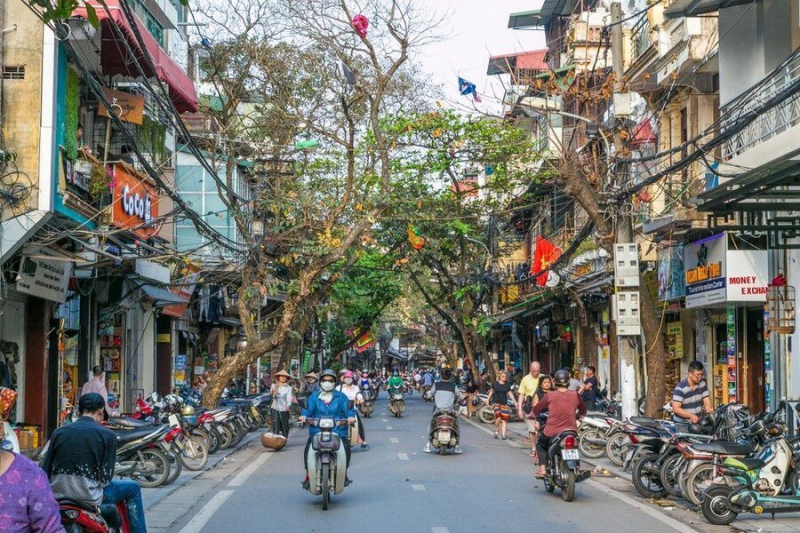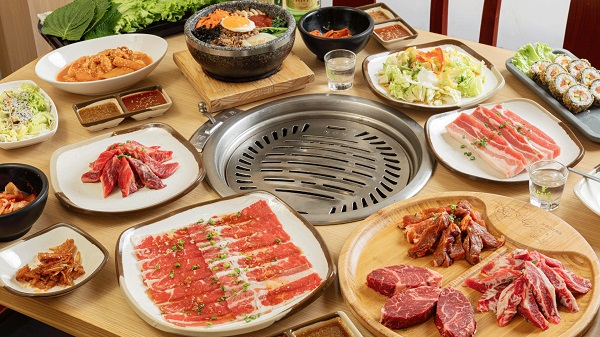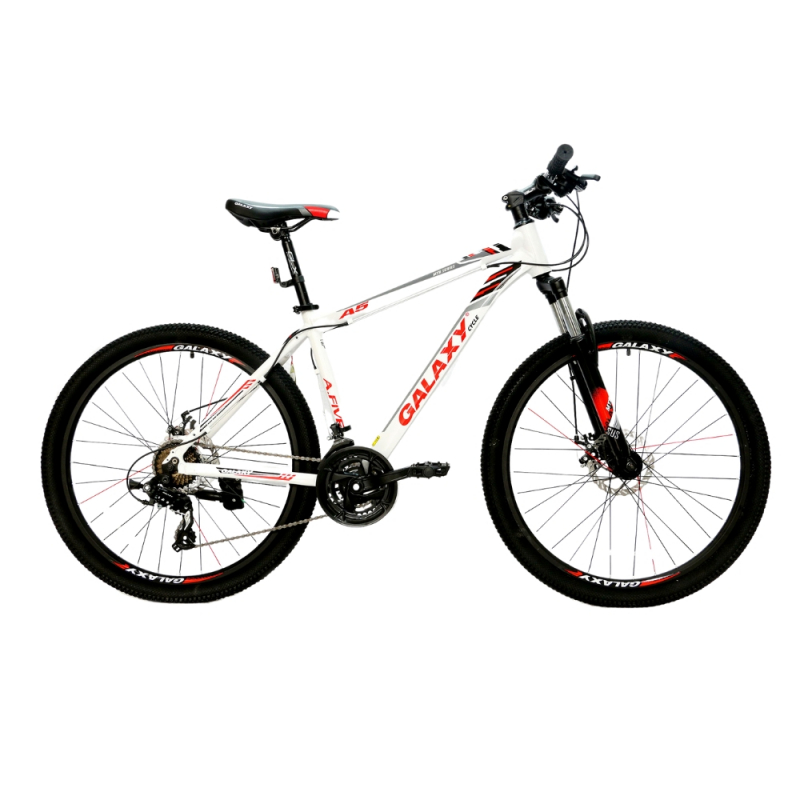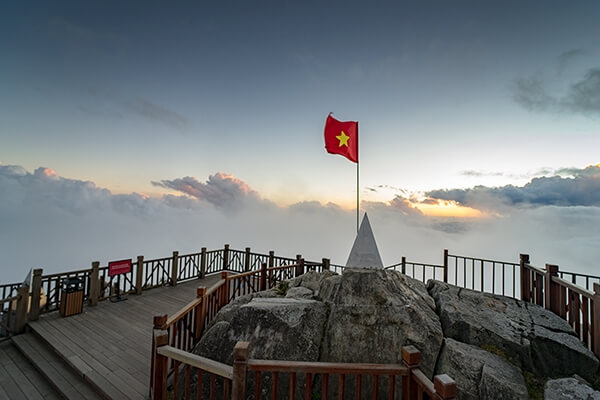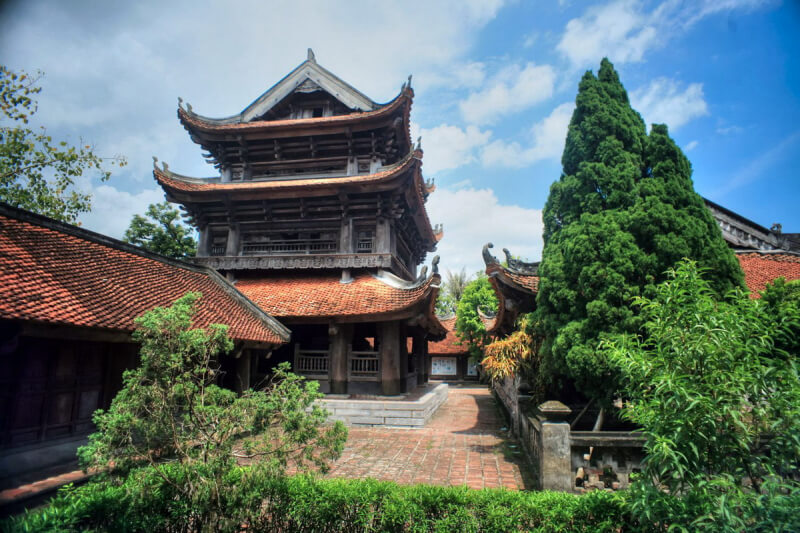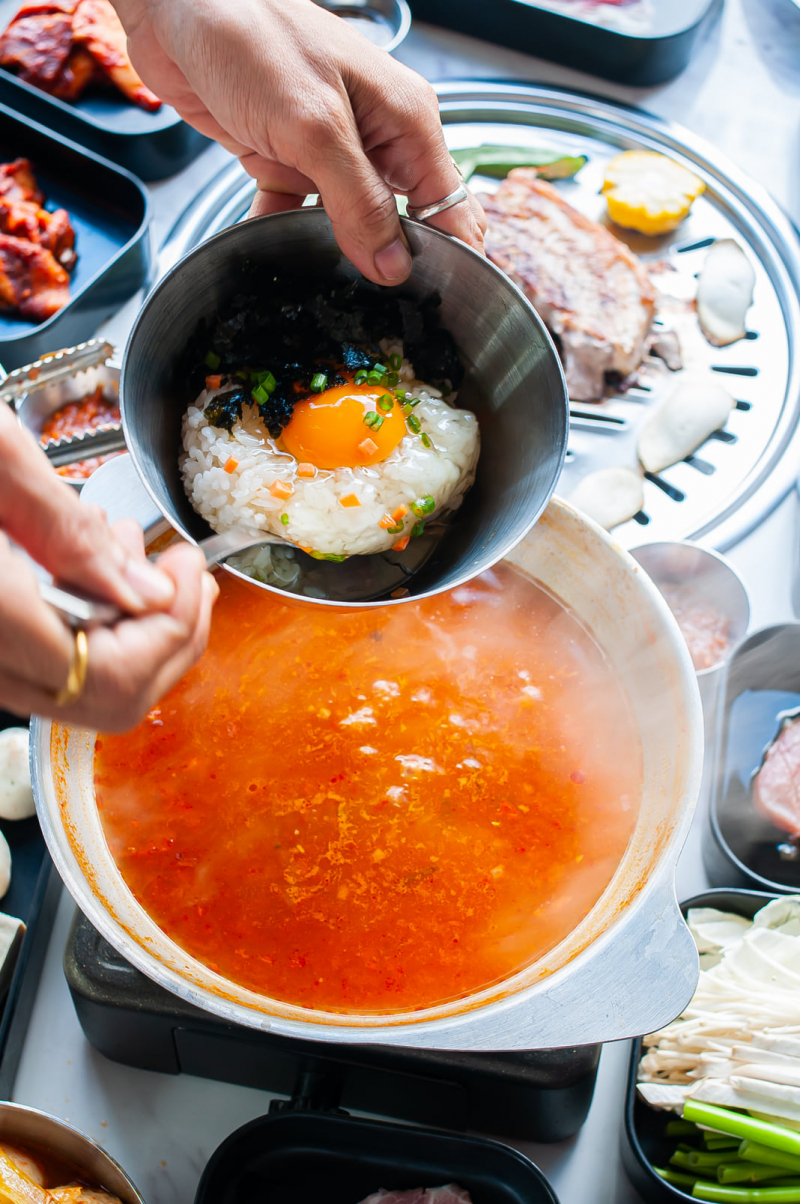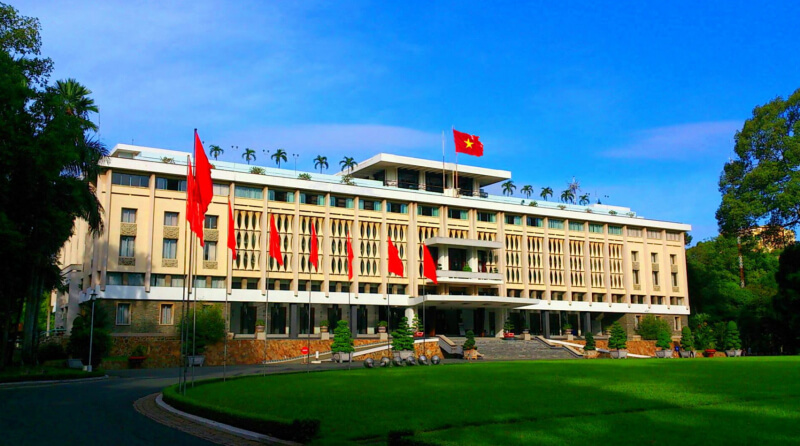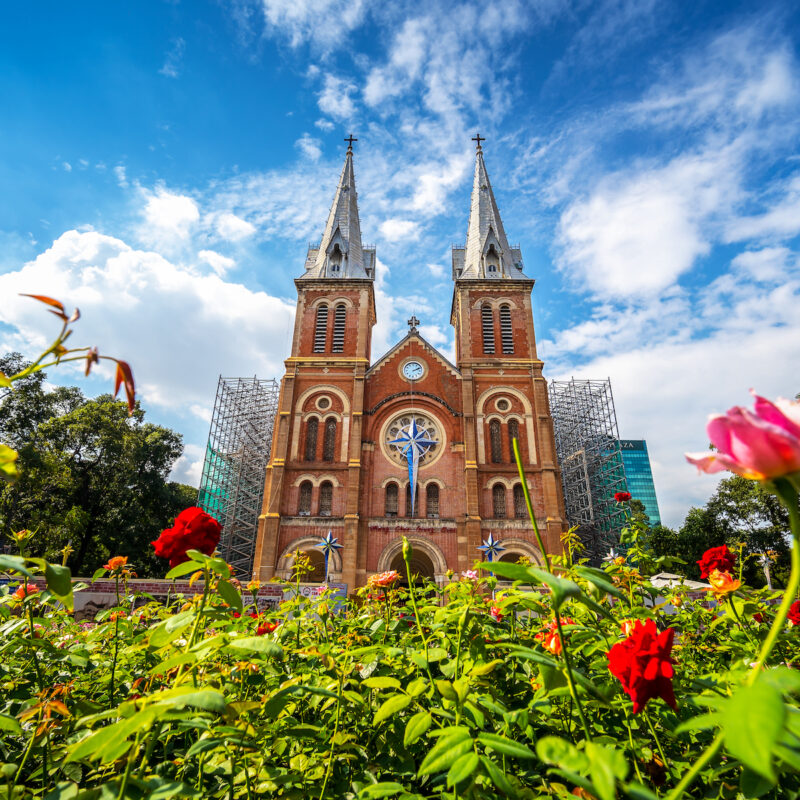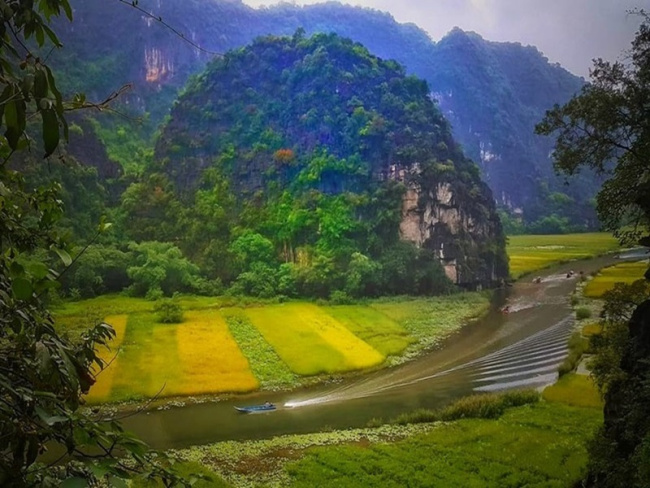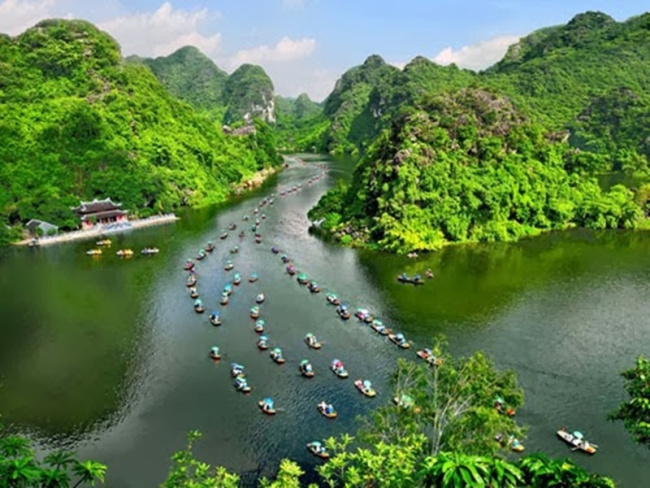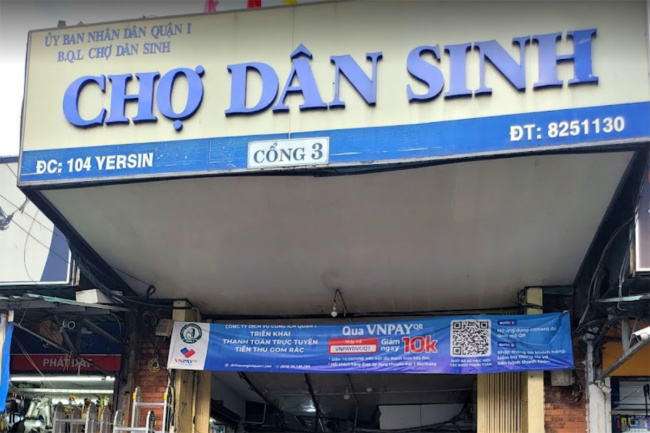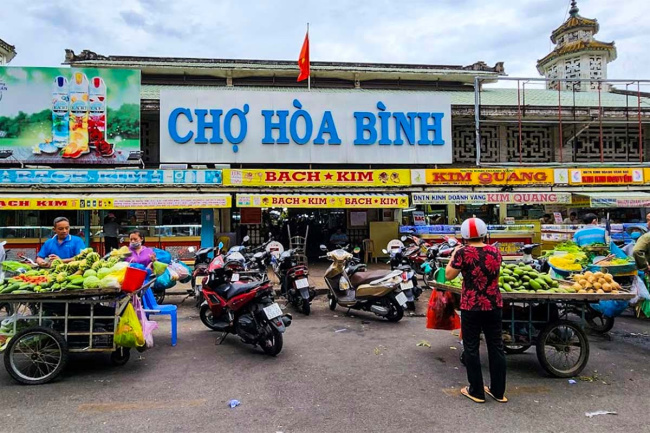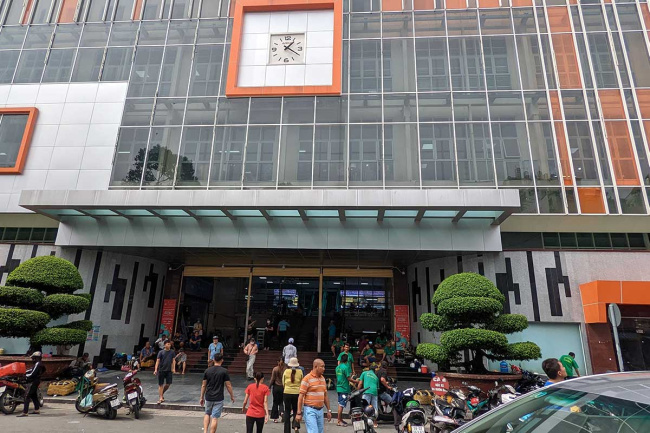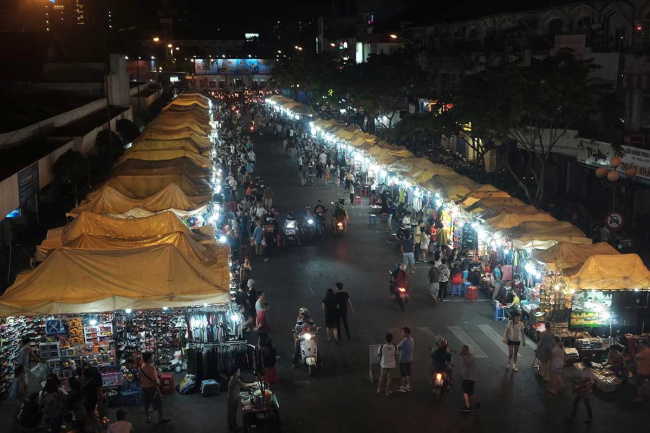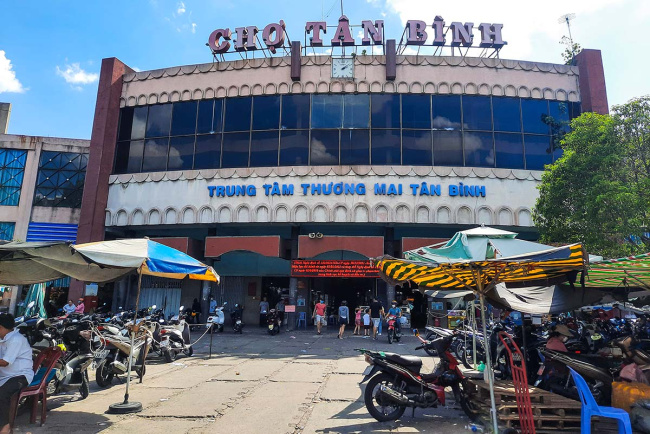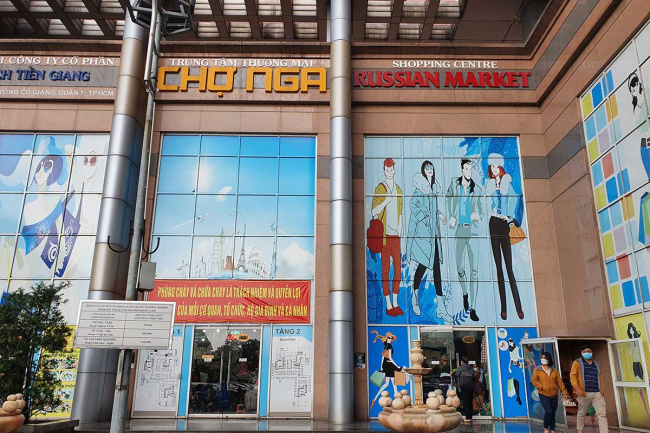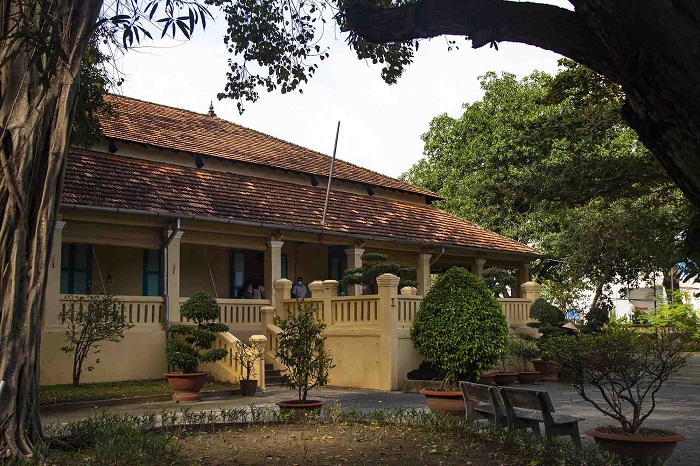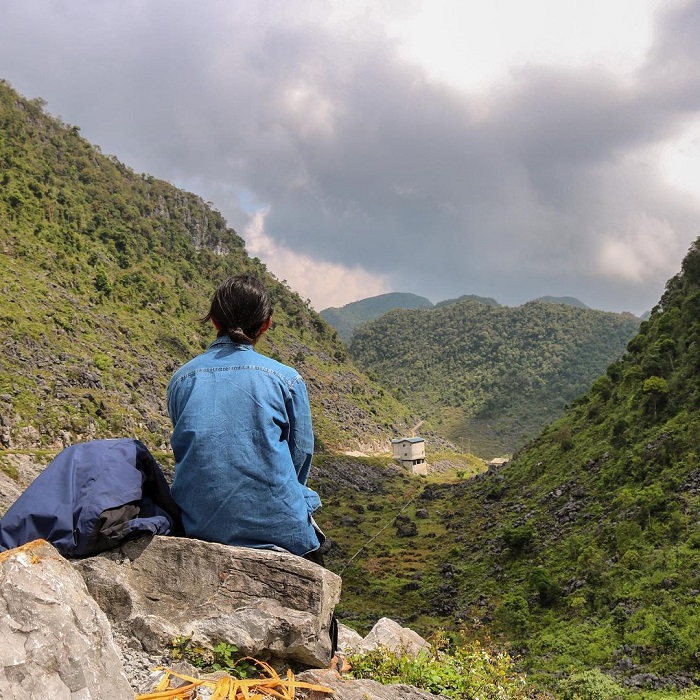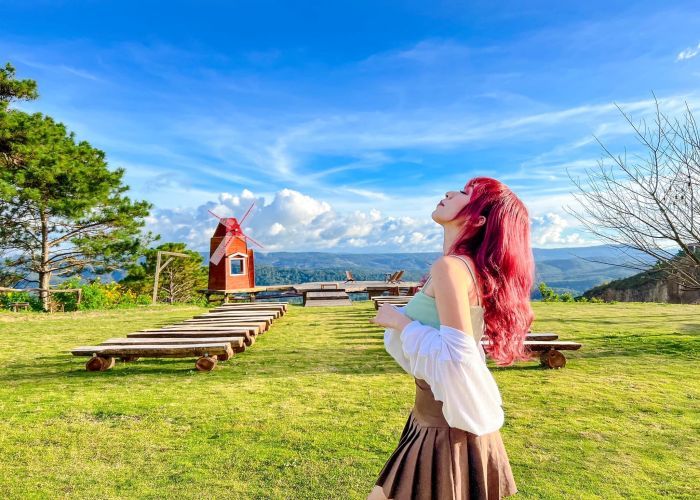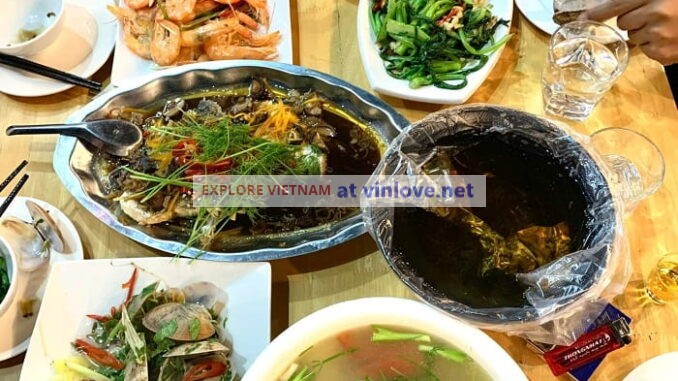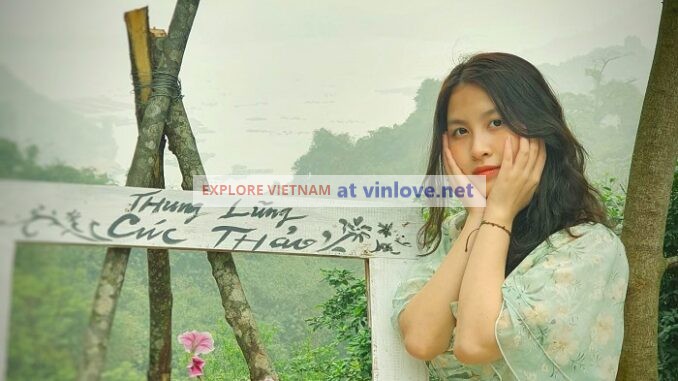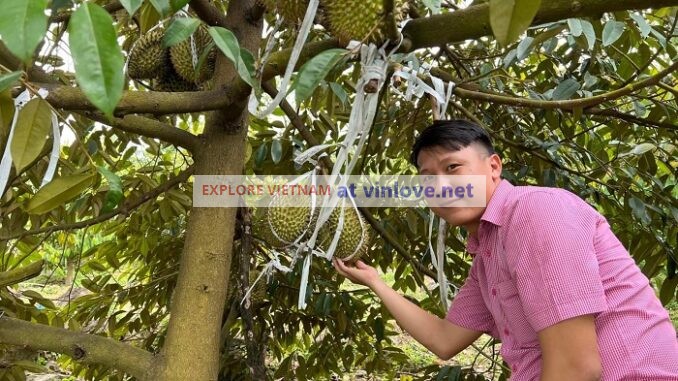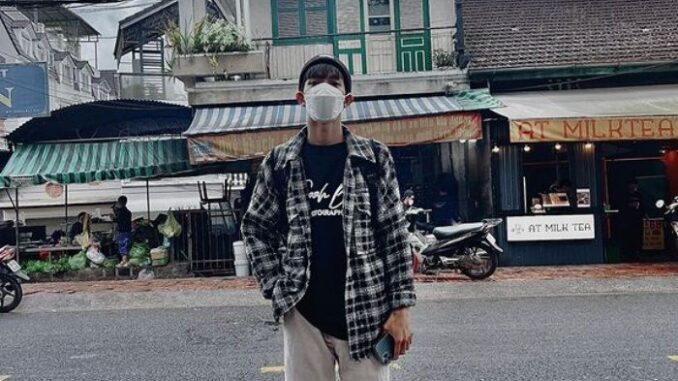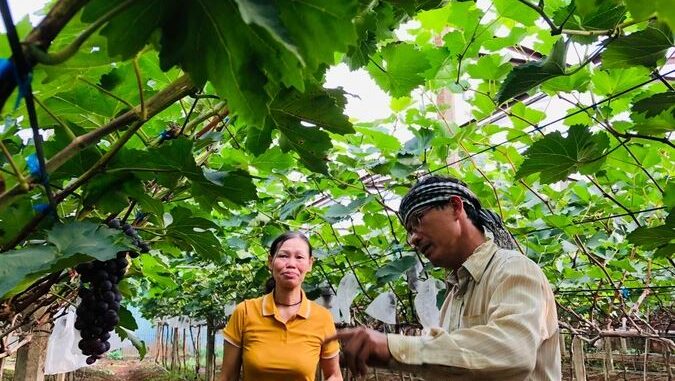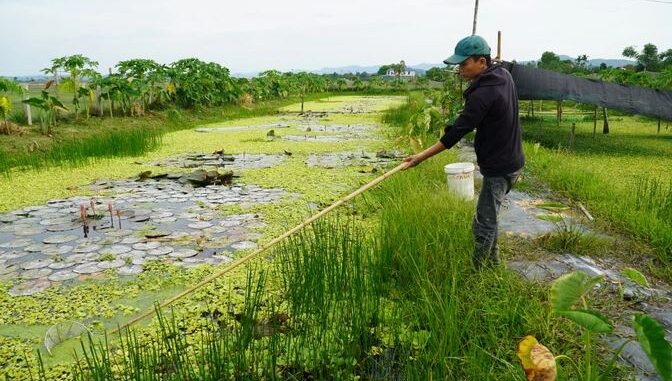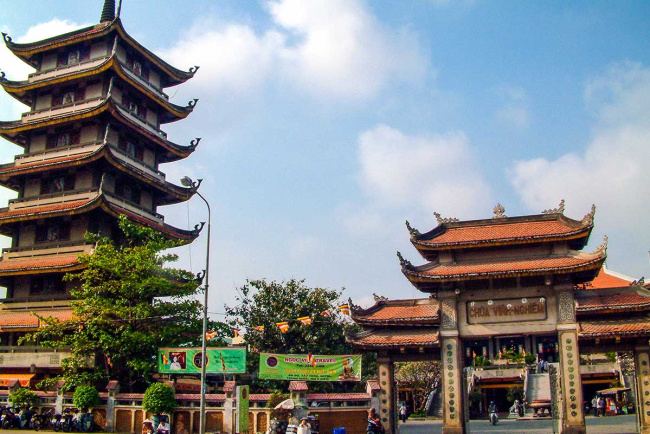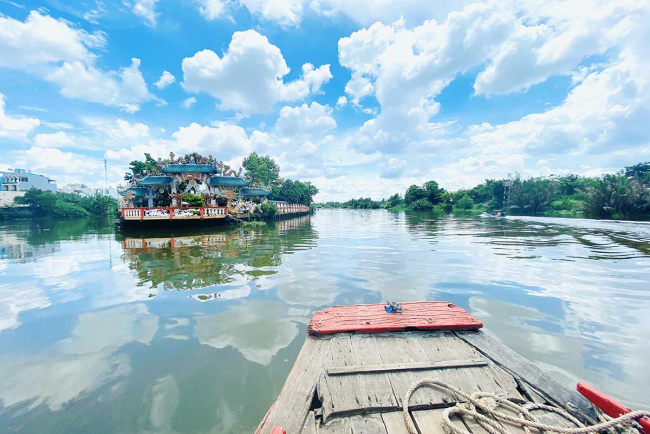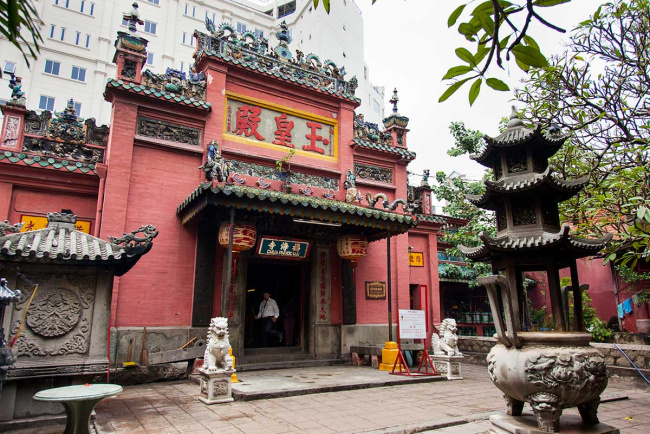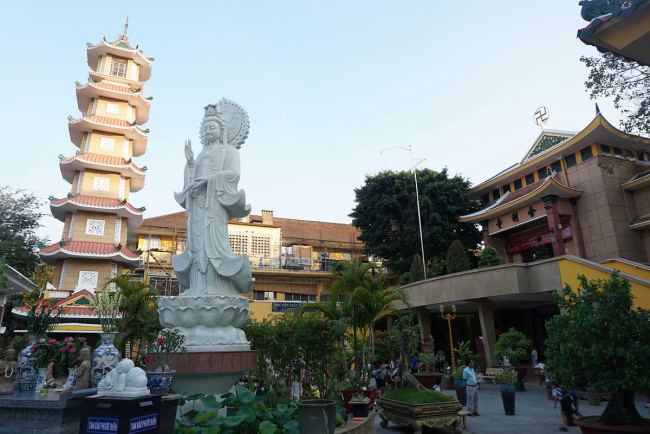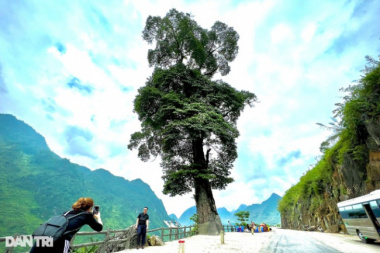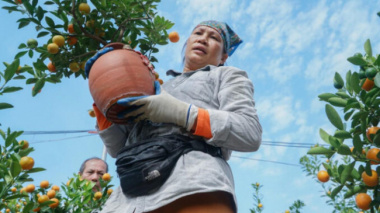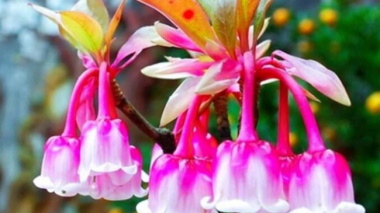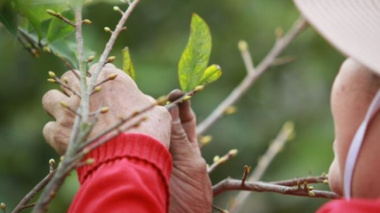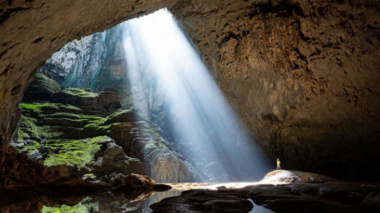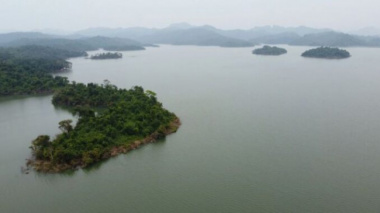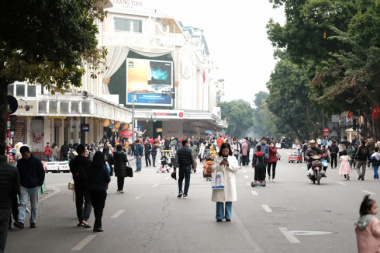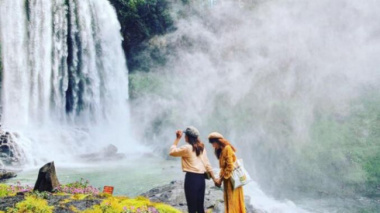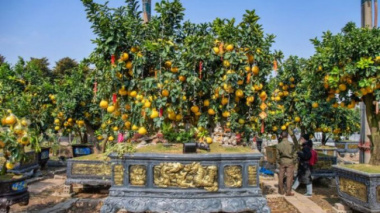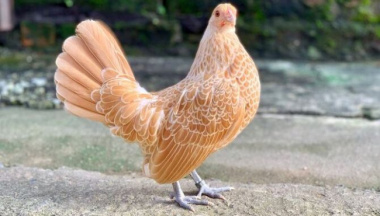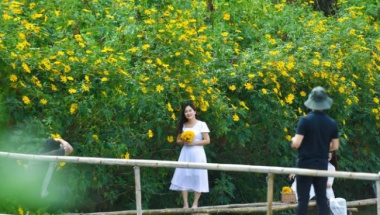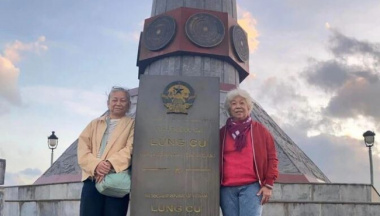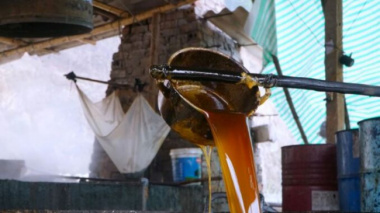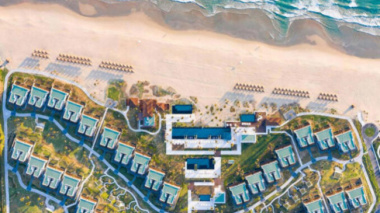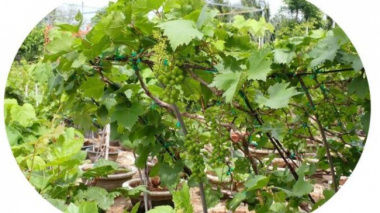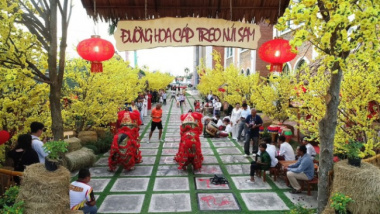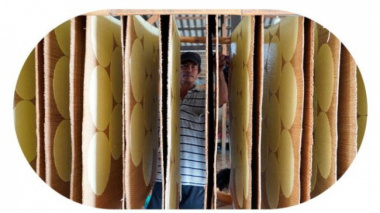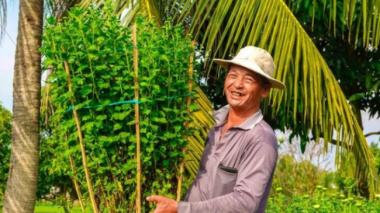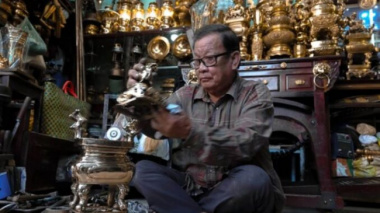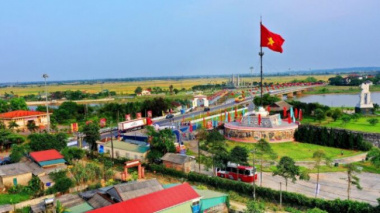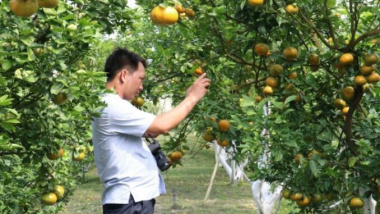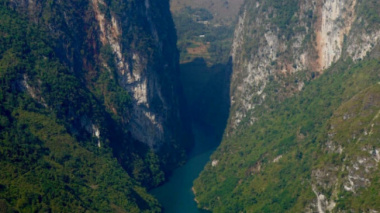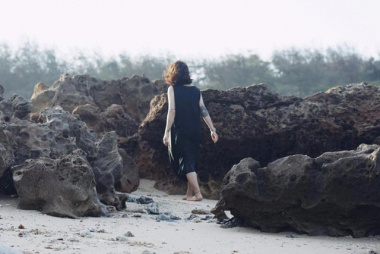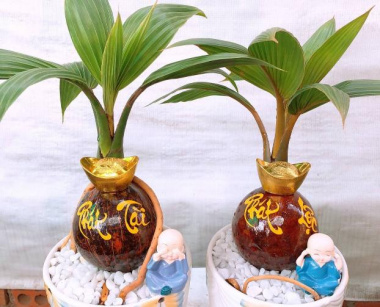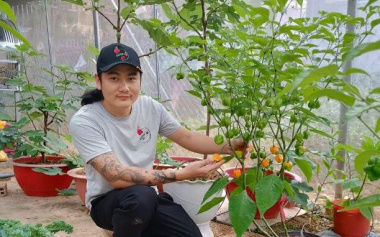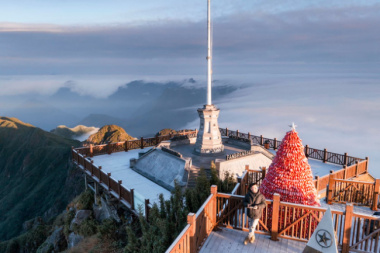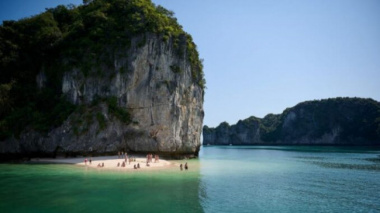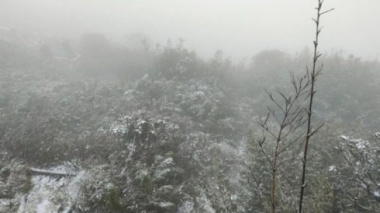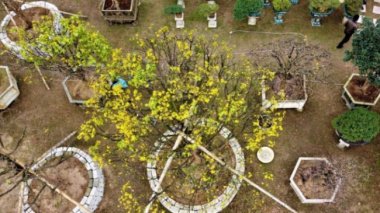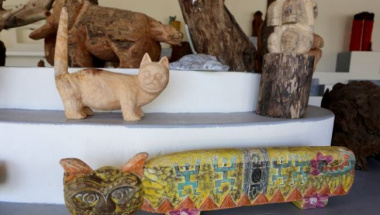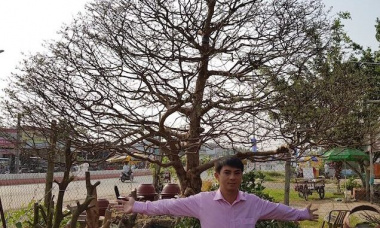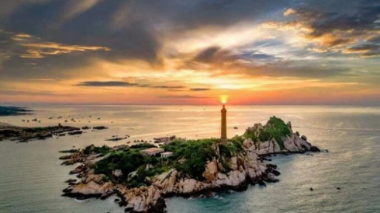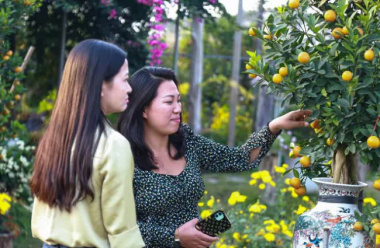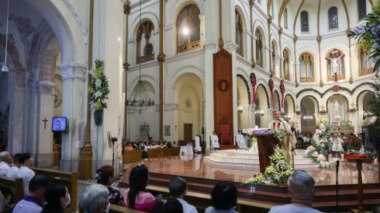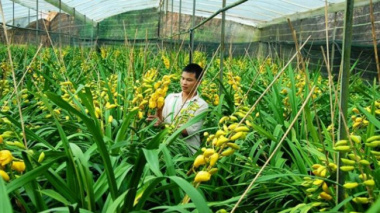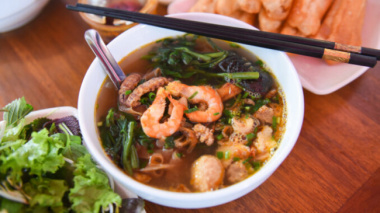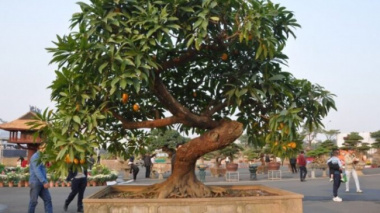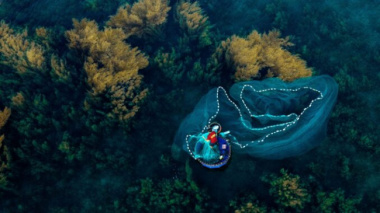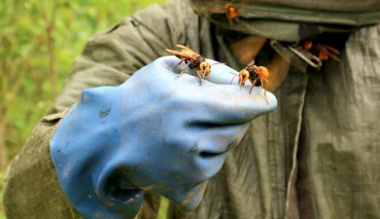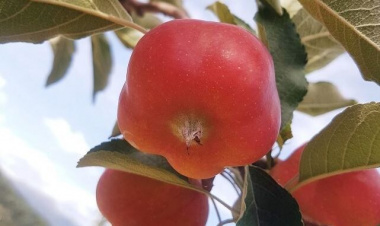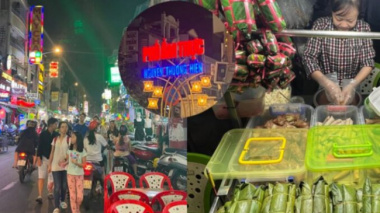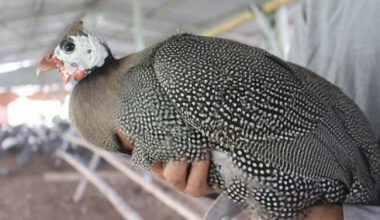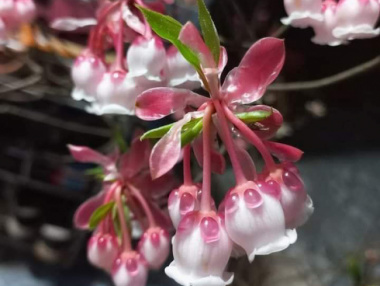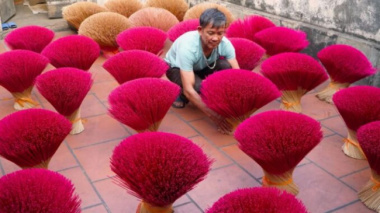Dong Van, Vietnam
- Rural Town in the Ha Giang Province
- Main Attractions
- Old Town Dông Van
- Sunday Market
- Hike to the Fort
- Lung Cu Tower
- Lung Cam Cultural Tourist Village
- Additional Village Visits
- Dông Van Karst Plateau Geopark
- Special Events
- Activities near Dong Van
- Latest in Dong Van
A small mountain town and district in Northeastern Vietnam, Dông Van is a well-known place where tourists stopover on their journey around the country. Close to the town and perhaps the most famous features of the district are the Dông Van Plateau and Karst. As a stopover destination, not many travelers choose to explore the area.
Those who do are given a glimpse of rural Vietnam and insight into what life is like away from the big cities. In addition to Dông Van, tourists can visit any of the nearby communes to understand more of the district and its culture.
Rural Town in the Ha Giang Province
The name Dông Van is associated with more than one place in Vietnam. The district of Dông Van is located in the far northeastern part of the country and it meets Vietnam’s border with China. Meanwhile, the town of Dông Van is not only a rural destination but also the district capital.

View of the karats and valley in Dông Van, Vietnam. Photo by: Khánh Hmoong.
The town is not far from the Vietnam-China border, which is why it is a stopover destination for those who are traveling in or out of the country. Finally, there is both a karst and plateau in the district that shares the Dông Van name. All of these destinations are in the same district within the greater Hà Giang Province.
True to its description, Dông Van is very rural with the provincial capital, Hà Giang about a 4-hour drive away. Even further to the south of Dông Van town and district is Hanoi. The drive from Hanoi to Dông Van takes nearly 9 and ½ hours. Traveling by car is the only way to reach the town of Dông Van as the area lacks the infrastructure for planes or trains.
Most travelers who do happen to visit Dông Van will be either road tripping through Northern Vietnam or traveling to the border. The fastest way to reach Dông Van is by car, but a more affordable option would be to arrange for a ride on a public bus. Though, journey times by bus do tend to be up to an hour longer.
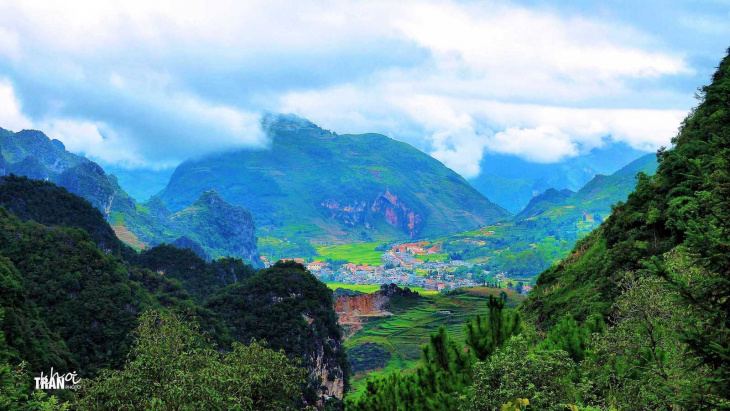
Dong Van town seen from afar. Photo:
History
Dông Van’s rural location can be deceiving and even though it may not seem like it, the area is overflowing with history. From the geological formations to French colonization and local ethnic groups, Dông Van has many stories to tell and even in the far reaches of the north, Vietnam’s culture comes to life.
Formed about 550 million years ago, the Dông Van landscape is renowned for its deep canyons and towering mountains. Major Earth events like the changing of periods can be traced back to the geological landmarks around Dông Van. Archeologists have also uncovered evidence of ancient organisms like fish, flora, bivalves, trilobites, and mollusks, which have all been fossilized in the rocks.
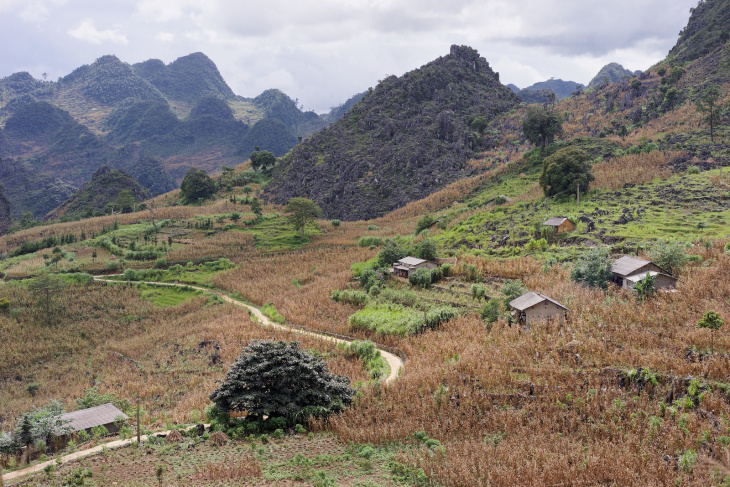
Dong Van’s rural landscape. Photo: Vincent Guth
Today, these geological discoveries have been preserved at the Dông Van Karst Plateau UNESCO Global Geopark. More specific to Dông Van town’s history is its experience with French colonization. While it may be unexpected that the French traveled as far north as Dông Van, the truth is that the town became an important lookout point for foreign forces.
In 1925, the French built a fort above Dông Van, which was used as a tactical position as well as houses for the colonizers. Today, the fort and some of the houses are still standing.
There are 16 ethnic groups that have roots in the town and district, living in the area for centuries, with the Hmong people being the largest. In fact, Dông Van’s oldest houses, dating back to 200 years ago, were built by ethnic groups. In the modern world, its culture lives on in the local communities.
Fun Facts
- As of 2019, it is estimated that just over 81,000 people live in the Dông Van District
- Dông Van is a small community that has been labeled as a class 5 township
- The exact geological location of Dông Van is 23°16’41” N, 105°21’43” E
Main Attractions
Though Dông Van is a rural and small community, there are a few activities in and around the town that can keep visitors entertained on their stopover. From exploring the proper town, understanding the history, visiting the locals, and heading into nature, Dông Van is a captivating destination.
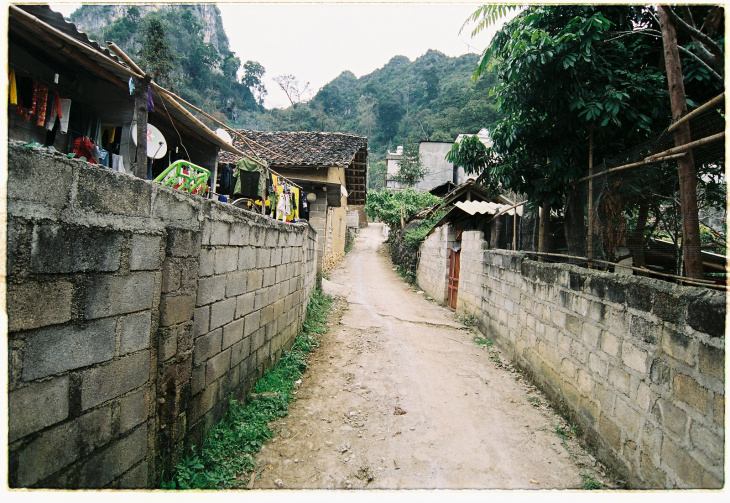
Street in the Old Quarter of Dông Van, Vietnam. Photo by: Khánh Hmoong.
Many activities can be done without a guide. However, locals are more than happy to assist any visitor on their journey.
Old Town Dông Van
Dông Van isn’t very large, but the town’s most famous section is the Old Square. In this ancient center, visitors can view the historical architecture, which has been converted into modern restaurants and cafes. Easily walkable, the Old Square is a fun place to spend the morning or afternoon.
Sunday Market
Held in the Old Square, Dông Van’s Sunday Market is often described as being the biggest and brightest in the area. As a matter of fact, many travelers have heard of the Sunday Market and it is frequently a reason why people chose Dông Van to be a stopover destination.
People from the nearby communes and those that live in town gather at the market to sell fresh produce and handmade goods. While the market is often called the Sunday Market, it is open all the days of the week with Sunday being the busiest time to visit.
Hike to the Fort
Preserved from the days of French colonization is the old fort that sits above the town. Now abandoned, the fort has become a popular spot for hikers who want to see the history and get exceptional views of the valley and town. The hike to the fort isn’t too long, but visitors should keep in mind that some sections of the trail are fairly steep.
Lung Cu Tower
Another hiking destination is the Lung Cu Tower, which marks Vietnam’s northernmost point. The tower is about 1 mile from the Chinese border and sitting atop a tower is a large flag, which was erected in 2010. The flag is 54 square meters large to represent the 54 official nationalities of Vietnam.
Summiting to the Lung Cu Tower requires ascending nearly 300 steps, so hikers should be in good shape and ready to tackle a challenging trail.
Lung Cam Cultural Tourist Village
Designated as a cultural tourist village by district authorities, Lung Cam is the place to go if you want to explore the local history, lifestyle, and culture. The village is about 25 kilometers (15.5 miles) west of the town of Dông Van and is situated in the Sung La Valley. The main highlight of the village is a traditional Hmong house, which features a stone courtyard and adobe structure.
Additional Village Visits
The Lung Cam Village isn’t the only ethnic village that is open to visitors. Many of the nearby villages are more than happy to welcome visitors into their homes. Visitors who wish to explore more of the local communities should make arrangements in town to visit a village.
Offers to stay overnight may be available, which would mean that travelers stay with a local family. Some villages are accessible by car, but a few are only accessible by hiking on foot.
Dông Van Karst Plateau Geopark
Technically spanning four districts of the Hà Giang Province, the Dông Van Karst Plateau Geopark is a large area that has been protected to preserve the area’s geological formations. An estimated 80% of the park is covered in limestone with famous features being the large karsts that emerge from the earth. The tallest mountain in the park is Mount Mieu Vac, which is 1,971 meters (6,466.5 feet ) tall.
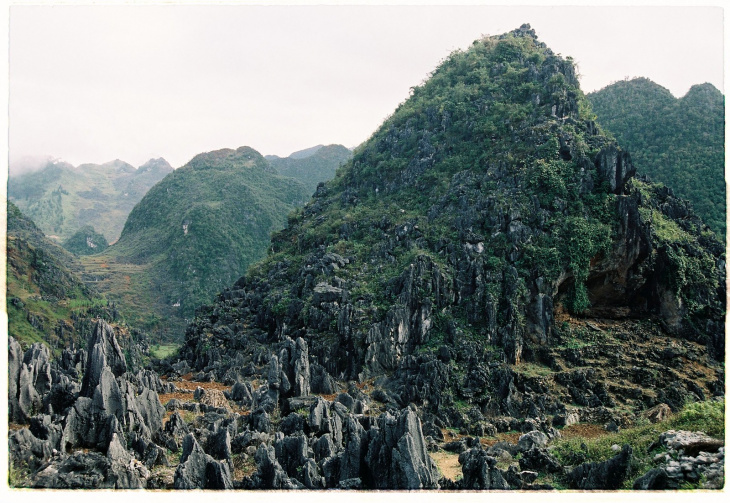
View of the Dông Van Karst in Dông Van, Vietnam. Photo by: Khánh Hmoong.
Since Dông Van is located within the park, many visitors will ask in town for local trails or highlights. There are numerous places to visit with deep canyons, caves, and rocky formations. Within the park, there are also two conservation areas that harbor unique flora and fauna species.
Some of the park’s most unique species include the Tonkin snub-nosed monkeys, Asian black bears, and Southern serows.
Accommodation
Surprisingly, there are quite a few accommodation options in Dông Van. From hotels to hostels and homestays, visitors are guaranteed to find a safe, clean, and affordable place to bed down for the night. Options include accommodations that are both in and just outside of town.
Plum Homestay – Situated away from town and in the quiet countryside is the Plum Homestay. Designed to be its own small community, on-site are a restaurant, bar, and BBQ facilities. Rooms in the homestay have double beds with shared bathrooms. A few rooms also have a terrace or mountain view.
Included with the stay are free Wi-Fi, access to the garden, and assistance with arranging local tours.
Lolo Ancient House – Steeped in the culture of the ethnic Lolo people, the Lolo Ancient House is a homestay experience where visitors can live like the locals. The house is made of clay and features a traditional yin-yang tile roof.
Located in the Lo Lo Chai Village, the homestay is only 1 kilometer (0.6 miles) from the Lung Cu Tower and 24 kilometers (15 miles) from Dông Van. The house does have Wi-Fi, and it is accessible by taxi, car, and motorbike. Onsite, visitors have the option to rent a room or stay in the eco-house.
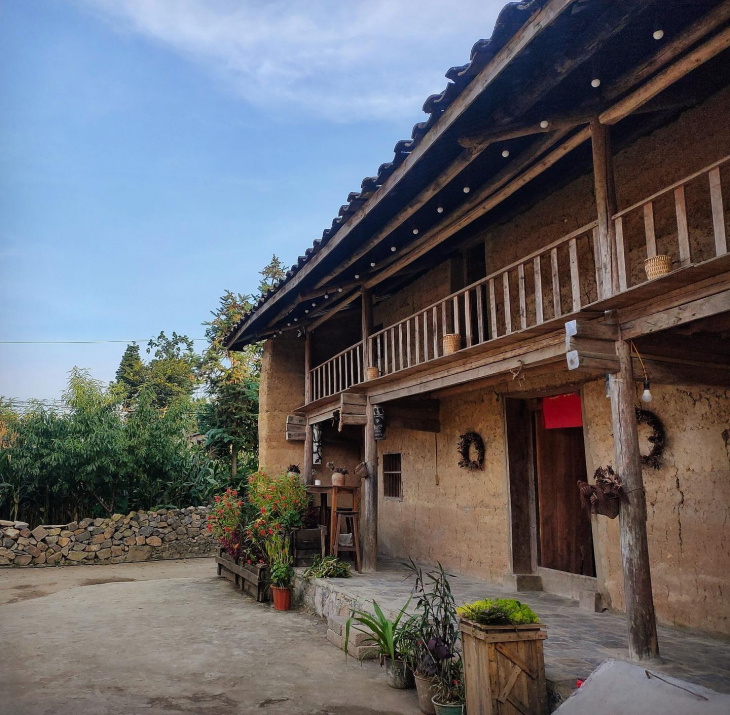
Lo Lo Ancient House in Dong Van. Photo: Lo Lo Ancient House
Lam Tung Hotel – For those who want to stay in town, the Lam Tung Hotel is one of the highest-rated accommodations in Dông Van. Being a small hotel, the rooms offered include queen beds, double beds, and single beds. There is free Wi-Fi in every room and in all common areas of the hotel. Families tend to love this hotel because of its convenient location and exceptional service.
Children of all ages are welcome, and the hotel can make accommodations for guests to use a crib or extra bed.
Dining
There aren’t a lot of dining options in Dông Van because of the town’s small size, however, there are a few options that have international dishes. Most hotels will have a small restaurant attached to the property, but travelers will also have options if they want to eat at places that are further away from their room.
Green Karst – One of the friendliest restaurants and one that is slowly growing a reputation amongst international travelers is called the Green Karst. Serving both traditional Vietnamese and Western dishes, the Green Karst has tasty meals for an affordable price. The owners are very nice, and they own a few different operations in own including a small tour company and nearby hostel.
Catering to visitors throughout the day, the Green Karst opens for breakfast and stays open until the late-night hours, which is when the rooftop becomes a pub.
Ba Ha – Simple and tasty, Ba Ha is the local spot for a delicious breakfast. This small restaurant serves banh cuon, which is a dish of noodles served in a fresh broth. The broth is served rather blandly, but spices and flavors are set out so that each person can season the dish themselves. Highly rated, Ba Ha is a great place to go before heading out for the next leg of your journey.
Quang Dung Restaurant – Located across from the Old Square and market area, the Quang Dung Restaurant has an English menu and Vietnamese staples. Dishes at Quang Dung include local and international flavors with breakfast being the main meal of the day.
A balcony area overlooks the square and it is a wonderful place where people can relax after a long day of traveling, hiking, or driving.
Special Events
Everyone in Vietnam loves to celebrate, whether it is a national holiday or local festivity. In Dông Van, most of the festivals are held to celebrate the local flora. Two popular events throughout the year are the Peach Blossom and Buckwheat Flower Festivals. The Peach Blossom Festival is held in February in the Meo Vac district and is used to promote tourism as well as the local people and culture.
In the autumn, the Buckwheat Flower Festival comes at a time when the landscape is transformed into hues of purple and white as the petals begin to bloom. A celebration of life, the festival is held in the Dông Van Highlands and near the Mai Pi Leng Pass. The blooming buckwheat flowers can be seen until the end of November.
Transportation
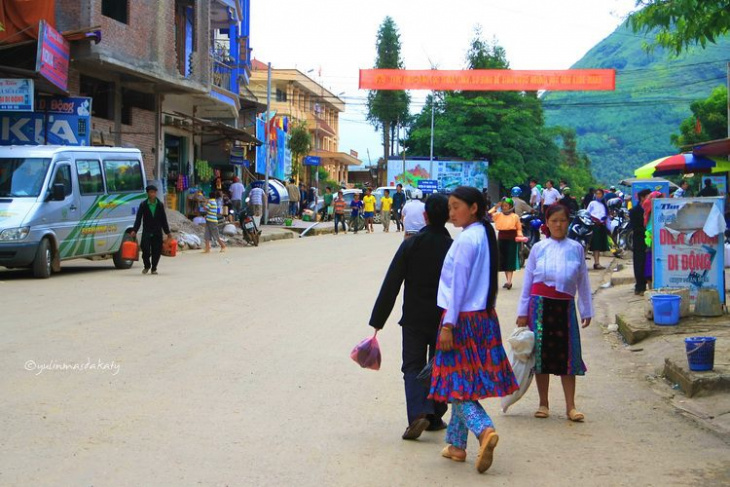
Meet the locals in Dông Van. Photo by: Yulin Masdakaty.
Any visitors in Dông Van who aren’t walking will be taking a taxi or motorbike in Dông Van. The official town part of Dông Van is easily navigated on foot because of its small size. However, taxis will need to be arranged if visitors want to explore other parts of the area.
Taxis have affordable rates and are fairly common in the area. Visitors who are having issues arranging for a taxi can ask their hotel or hostel for assistance.
Besides taxis, visitors can also rent a motorbike or hire a tour guide. Both are reasonable ways to get around with one option being rather independent of the other. A few hotels have motorbike rentals available and if not, you should be able to find a shop in town. Local tours also have small stores in town, which is a convenient place for visitors to meet and make arrangements.
Weather
Being in the far north of Vietnam, Dông Van is unique because, unlike its southern counterparts, the town actually has 4 seasons. Temperatures are coldest during the winter months and visitors will need to pack warm clothes and gear. January to March tend to be the coldest months, though temperatures can also drop in December.
The most temperate time to visit Dông Van is during the fall months, which is when there is less rain and heat. From the months of October to December, Dông Van receives most of its visitors for the year. The off-season for Dông Van is during the summer and spring months, which is when the weather is hotter and wetter.

Lung Cu Tower in Dông Van, Vietnam. Photo by: fabulousfabs.
Dông Van may be far off of the normal tourist map, but its reputation as a unique destination is growing. Once used mostly as a stopover, more and more travelers are interested in visiting Dông Van for more time so that they can explore the area. Awaiting visitors is a dramatic landscape and epic views, as well as friendly locals and diverse culture.
Activities near Dong Van
Historical Sites:
Towns:
Latest in Dong Van
View more Dong Van articles
Đăng bởi: Nguyễn Mẫn


